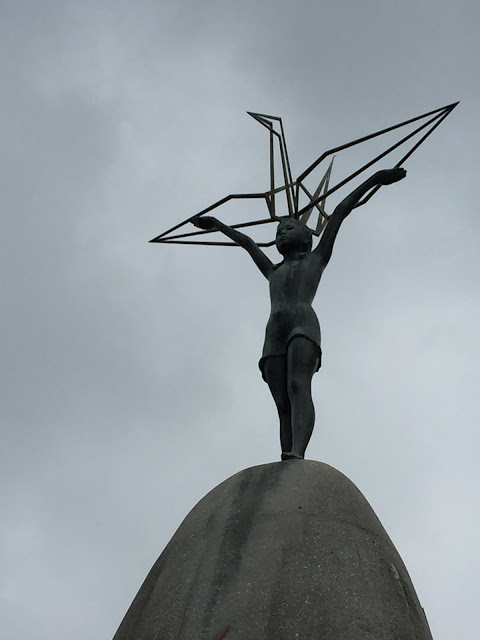I have been fortunate enough to have been able to travel to both Japan and Argentina. While these countries may seem very different (they are of different continents, their citizens speak different languages, they have different customs/cultures/traditions, etc.), they have one similarity: they both underwent a relatively recent tragedy, and they both are working to recover from said tragedy.
On August 6, 1945, the United States dropped an atomic bomb on Hiroshima, Japan. Three days later, on August 9, the U.S. dropped a second bomb on Nagasaki. These bombs absolutely decimated the two cities, killing over 100,000 people and injuring even more (plus, many of those who survived were later inflicted with radiation poisoning). Although some of the Japanese wanted revenge, the more level-headed survivors decided to focus on rebuilding Hiroshima and creating a lasting peace. City officials decided to create different areas in the city solely dedicated to fostering this everlasting peace: the Hiroshima Peace Memorial Park, the Children's Peace Monument, and the Peace Memorial Museum. Also, nearby the museum is the A-Bomb Dome (aka Hiroshima Peace Memorial), which was one of the few buildings that actually remained standing after the bomb struck (although it was severely damaged). All of these areas serve to remind both tourists and locals of Japan's past in order to prevent a similar tragedy from occurring again in the future.
When I was in Hiroshima while on tour with my choir, I was unsure of how the Japanese would treat me and the other members of my choir (as we were all Americans). I did not know if they would treat us with suspicion or anger. Instead of those emotions, the Hiroshima children's chorus welcomed us and engaged in many different conversations (despite the language barrier) in an attempt to connect more with us. I was incredibly impressed by how this country managed to recover from the atomic bombings of Hiroshima and Nagasaki, and how the country is still committed to both remembering the tragedy and to creating peace (even with America) some 70 years after the event occurred in the first place.
 |
Children's Peace Monument in Hiroshima

 |
 |
| A-Bomb Dome |
Although Argentina did not experience the same type of tragedy as Japan did (meaning they were not bombed by another country), what happened in Argentina during the 1970s also was extremely gruesome and impacted the country as a whole for decades after. In the 1970s, there was a coup to overthrow Isabel Perón, which resulted in a violent military dictatorship led by Jorge Rafael Videla. During "La Guerra Sucia," aka the Dirty War (1976-1983), the government targeted anyone deemed "subversive," which included many nonviolent leftist political thinkers or sympathizers and their family members. The Dirty War resulted in over 30,000 "disappeared" people (aka "los desaparecidos"), who were killed during the war.
After studying Argentina's history and visiting the country myself, I was impressed by the Argentine people's efforts to recover from this bloody time period. An organization known as Las Madres de la Plaza de Mayo was created after the Dirty War. Members of this organization have worked hard to gather up the DNA of grandmothers of female desaparecidos to create DNA banks in order to match potential children of desaparecidos to their grandmothers. Their efforts have resulted in over 100 children of desaparecidos being identified and reunited with their remaining/living family members (aunts, uncles, etc.). During the Dirty War, the government stole children from the female desaparecidos (if they were pregnant and gave birth during captivity) and distributed these kids to random government-approved families, so the fact that Las Madres de la Plaza de Mayo is trying now to reunite these kids with their biological families is quite heartwarming and inspiring. Another impressive way Argentina is trying to recuperate from the Dirty War is by finally holding trials against the military leaders during the dictatorship who ran the different clandestine camps that held the desaparecidos and organized their kidnappings. Because of these trials, military leaders like Videla have been convicted and sent to prison.
 |
| The Symbol of Las Madres de la Plaza de Mayo |
By visiting Japan and Argentina, I have seen the importance of both remembering the past and trying to recover from it. I am impressed by the strength of the citizens of both of these countries to rebuild after the tragedies that occurred within their borders.







Comments
Post a Comment